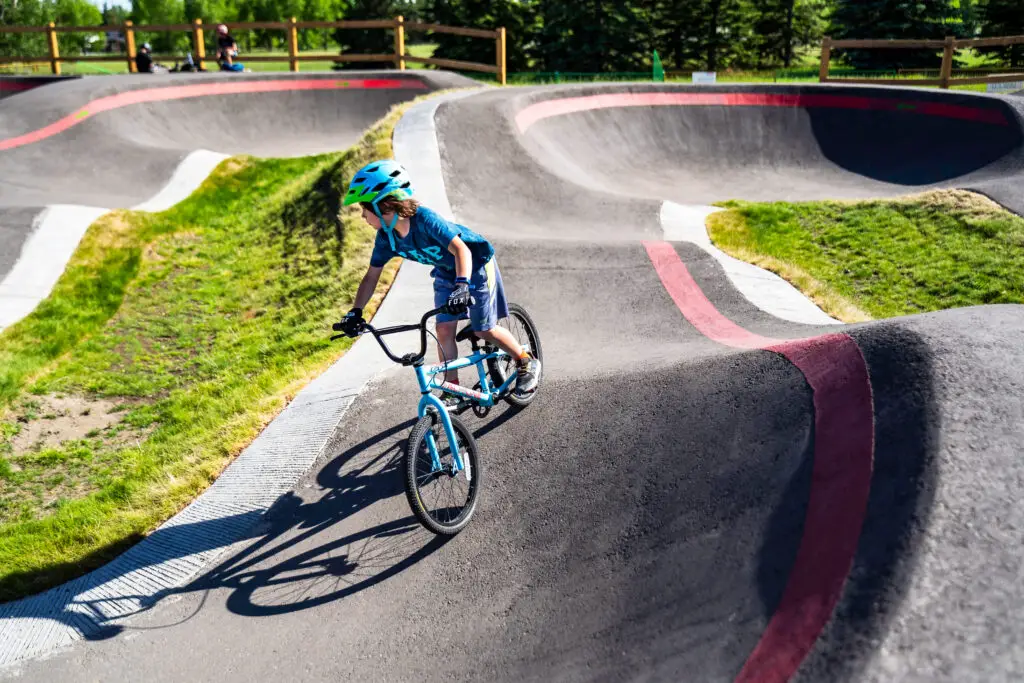Did you know that BMX Racing was the first BMX discipline to be accepted as a sport at the 2008 Olympics? This format is also known as supercross. Each country can enter up to three athletes in the race, which is contested in several heats. Find out all about BMX Racing here!
Open your account at Betano and get up to 1,000 reais in bonuses.
Payments via PIX, live games and super odds!
Click here to open your account!
All about BMX Racing: history of the sport
The history of BMX Racing is almost identical to the history of Freestyle. The sport began in California, United States, in the late 1960s and early 1970s;
Inspired by motocross, a sport of racing motorcycles on dirt tracks, BMX (Bicycle Motocross) emerged as a more accessible alternative for young people who wanted to imitate the maneuvers and races of motocross, but with bicycles.
Continue reading and learn all about BMX Racing!
In the late 1960s, young Californians began modifying their bikes to resemble motocross bikes, adding thicker tires and taller handlebars;
The first BMX races took place informally on vacant lots and improvised dirt tracks.
In the 1970s, the sport began to organize itself and gain popularity. In 1970, the first official BMX race was held in Santa Monica, California;
In 1972, the Bicycle United Motocross Society (BUMS) was created and was one of the first organizations dedicated to BMX.
In 1974, the National Bicycle League (NBL) was founded in the United States, establishing rules and regulations for competitions.
In the same year, the first magazine dedicated to BMX, “Bicycle Motocross News,” was published, helping to popularize the sport even more.
Read on and find out all about BMX Racing!

In the 1980s, BMX rapidly expanded to other countries, especially in Europe and Australia. In 1981, the International BMX Federation (IBMXF) was founded, unifying the rules and regulations for international competitions.
In 1993, the International Cycling Union (UCI) began regulating BMX Racing, promoting the sport to a more professional and internationally recognized level.
It wasn’t until 2003 that the International Olympic Committee (IOC) announced the inclusion of BMX Racing in the Olympic Games program, a significant milestone for the sport.
Read on and find out all about BMX Racing!
All about BMX Racing: race structure, rules and equipment
- Tracks: BMX Racing tracks are generally short, around 400 meters long, full of obstacles such as jumps, steep turns and undulations. The structure of the track favors the speed and technical skill of the riders.
- Race format: the competitions are contested in heats of up to eight riders. The races are fast, with each lasting just a few seconds, requiring a high burst of energy and quick reflexes.
- Bikes: BMX bikes are designed to be light and resistant, usually with 20-inch rim wheels, one gear and a brake on the rear wheel. They are designed to withstand the impact and speed of racing.
- Safety equipment: the use of safety equipment is mandatory, including helmets, knee pads, elbow pads, gloves and appropriate clothing to protect cyclists during races.
Continue a leitura e saiba tudo sobre BMX Racing!
Tudo sobre Ciclismo BMX Racing: regras do esporte
BMX Racing is a much more explosive discipline compared to other more traditional forms of cycling, which generally value endurance over several minutes.
In contrast, BMX Racing requires an intense burst of energy over a short period of a few seconds.
Sprint races are contested by up to eight riders on a track full of jumps, hairpin bends and obstacles, where the competitor with the fastest reactions and the fastest pace wins.
Keep reading and learn all about BMX Racing!
The pilots start from a gate at the top of an eight-meter-high hill, launching themselves onto a 400-meter track and reaching speeds of up to 60 km/h;
Quick reactions and explosive strength are crucial to get ahead of the pack and maintain your lead until you cross the finish line.
The final race is usually a thrilling spectacle that leaves spectators breathless.
Read on and find out all about BMX Racing!
How does classification work in BMX Racing?
The competition system in a BMX Racing event consists of three main stages, with some differences between the men’s and women’s categories;
However, the main variations are in the number of stages in which each group participates, see below:
- Time Trial (men)
- Second stage with five races (men)
- Semifinals (men and women)
- Finals (men’s and women’s)
At national level, 32 men and 16 women take part in the first event. Initially, the athletes’ times are timed, and then the second and third stages determine the eight best competitors who advance to the finals.
Continue reading and learn all about BMX Racing!
All about BMX Racing: top athletes
Considered one of the greatest BMX riders, Maris Stromberg is the only two-time Olympic champion in the history of BMX Racing. Besides them, other notable riders are Mike Day, Donny Robinson, and Sam Willoughby, who have contributed to the popularization and development of the sport.
Did you enjoy learning all about BMX Racing? Take the opportunity to find out more too:



